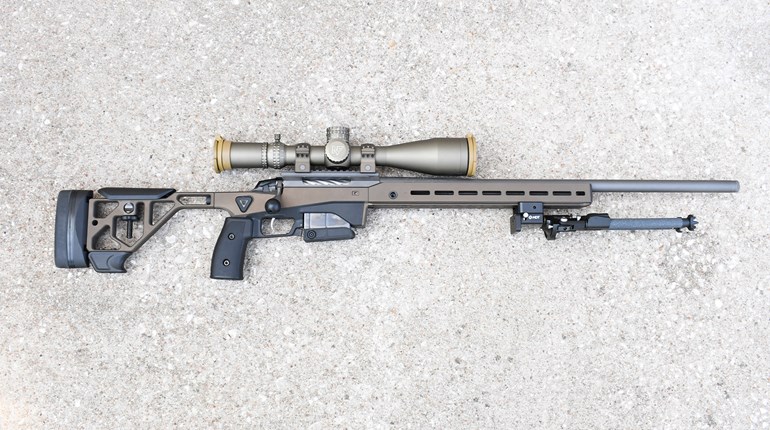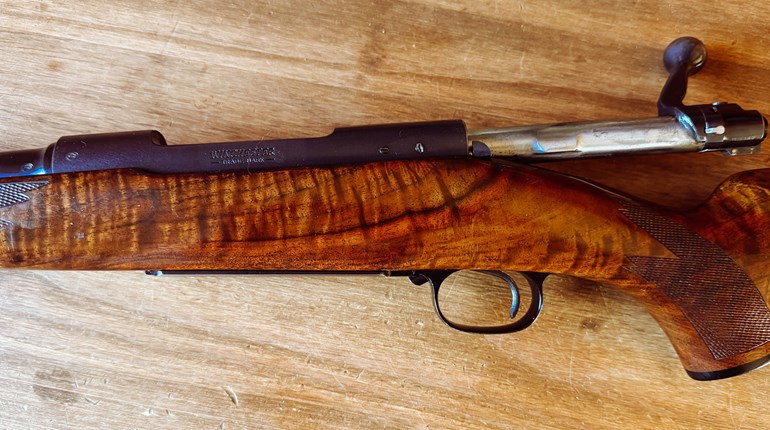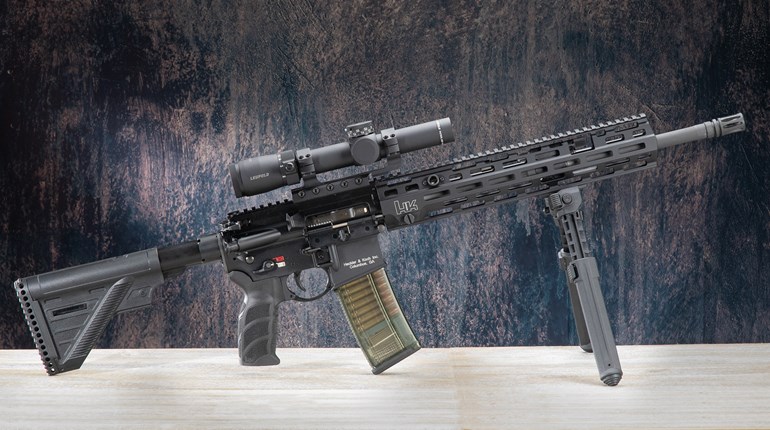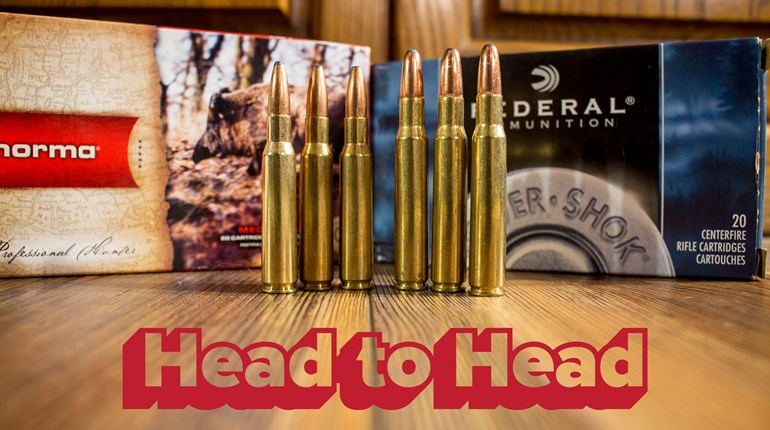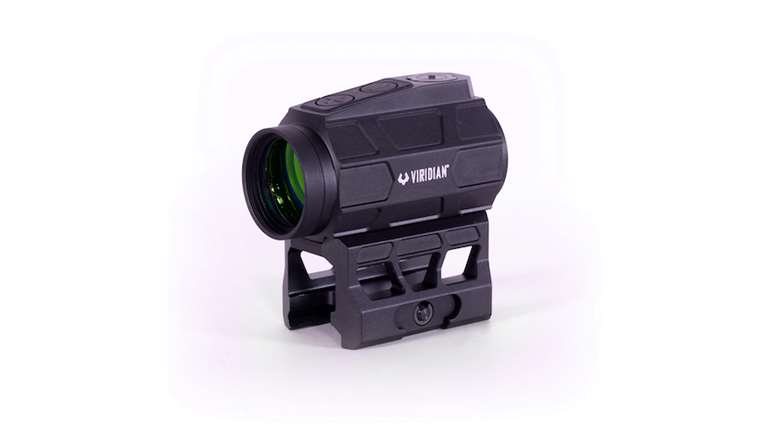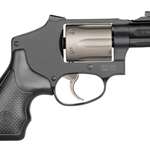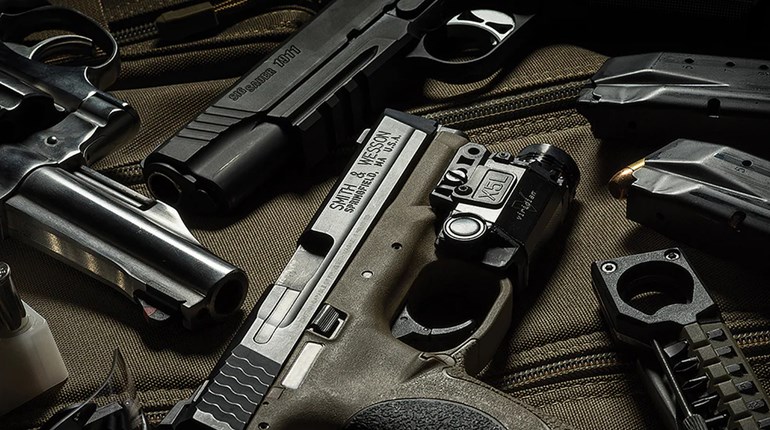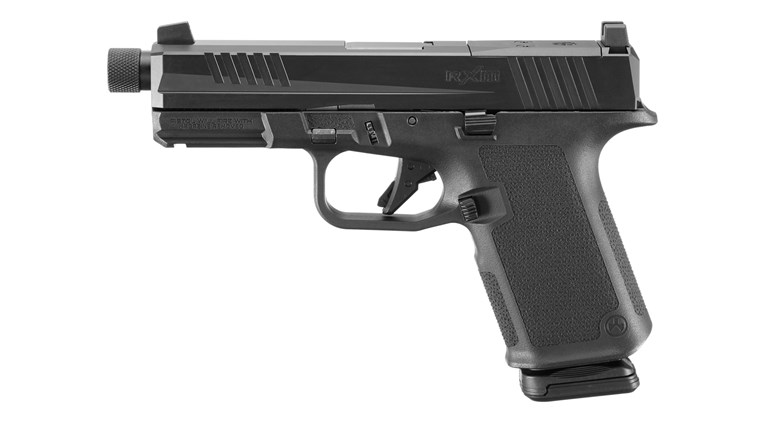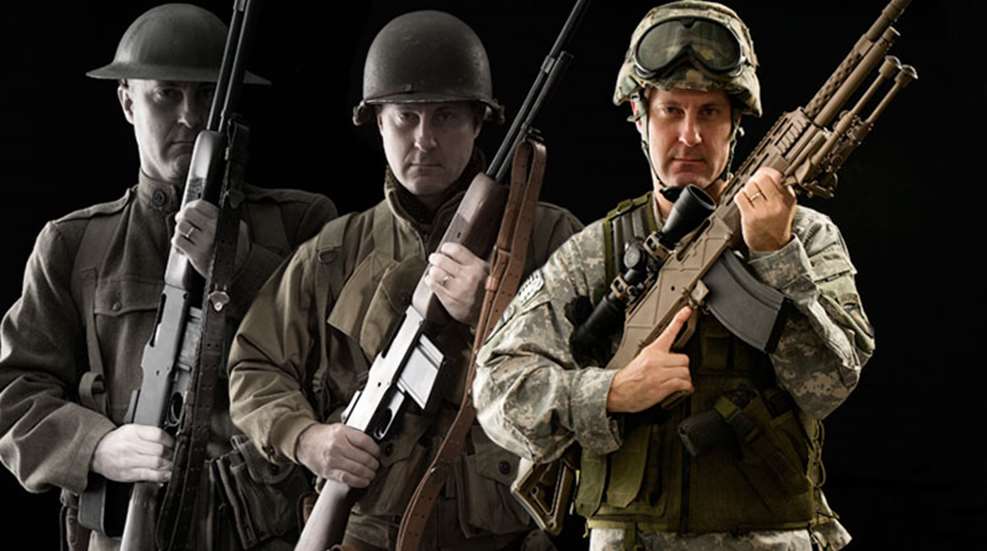
Designed in 1917 by the renowned firearm genius John Moses Browning, the unique Browning Automatic Rifle (BAR) was instantly embraced by the U.S. Military in time to see action during the last two months of the "War To End All Wars."
Eventually adopted as the Model 1918, that first 16-pound BAR operated by a long-stroke gas-piston system and fired from the open-bolt position, fed by a 20-round box magazine. The BAR was a selective-fire rifle intended to be fired from the hip, supported by the sling while walking.
Like the U.S. 1903 Springfield rifle, the BAR was chambered for the caliber .30, 1906 (.30-'06 Sprg. or 7.62x63 mm) cartridge. The .30-'06 Sprg. was developed in the wake of America's experience using the .30-40 (7.62x33.1 mm) cartridge in the U.S. Krag-Jørgensen rifle. It went up against the superior 7x57 mm cartridge in the Model 1893 Mauser rifle used by Spain during the Spanish-American War. Knowledge of the more powerful Mauser 7.92x57 mm cartridge developed for the improved Model 1898 Mauser rifle helped spur development of the more potent .30-'06 Sprg. The U.S. Military wanted something even better, and the .30-'06 Sprg. became the most robust and longest-range general-purpose battle cartridge in the world.
The BAR went on to be developed and adopted by the U.S. Military in the 19-pound M1918A1 and M1918A2 models, and for a time the 24-pound Model 1922. In 1931 Colt introduced its 13-pound Monitor Automatic Machine Rifle (R80), a pistol-grip version of the BAR with a muzzle brake—the main gun used to end the murderous rampage of Bonnie Parker and Clyde Barrow in 1934.
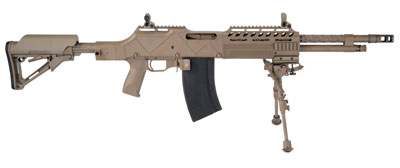
Issued by the U.S. Military during World War I, World War II and the Korean War, the BAR continued into the early part of the Vietnam War, where it saw use by U.S. Special Forces and as a door gun in U.S. Navy rescue helicopters. Adopted by some 50 countries in several chamberings, the BAR was manufactured in Belgium, Sweden, Poland and China. In the U.S., the BAR was made by Colt, Winchester, Marlin Rockwell, New England Arms, Royal McBee Typewriter and IBM.
In 1996, after extensive development, Robert I. Landies, of Ohio Ordnance Works (OOW) in Chardon, OH, introduced a semi-automatic-only version of the M1918A2 BAR called the 1918A3 SLR (Self Loading Rifle). Now, following an even greater endeavor, the company is offering what can only be described as the final word—the ultimate in the almost century-long history of the BAR, the Heavy Counter Assault Rifle (HCAR).
The brainchild of Robert I. Landies' son, Sgt. Robert W. Landies III, USMCR, the HCAR is a 21st century BAR in all respects, except one: the retention of the proven .30-'06 Sprg. cartridge for which it is chambered.
Using the original super-strong 1918A3 SLR steel receiver, Landies lightened it by thinning all non-vital areas. Initially offered with a Bergara 16-inch 1:10-inch twist barrel, a 20-inch barrel will follow. The barrel has also been lightened using, by special permit, the "dimpling" method patented by C. Reed Knight of Knight's Armament Corp. At the muzzle, the barrel is machined with 5⁄8x24-inch threads and is equipped with a SureFire Muzzle Brake Mount for the new SOCOM7.62 Suppressor recently adopted by U.S. SOCOM.
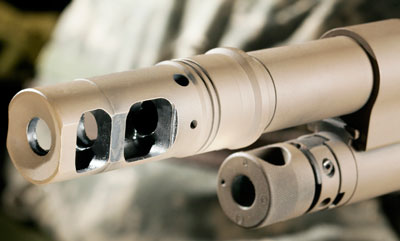
Shortening the original 24-inch barrel required shortening and lightening the long-stroke gas-piston system. A refined hydraulic buffer has also been added, along with an alloy receiver extension housing an AR-15-size tube and a special synthetic stock adjustable for length-of-pull.
Replacing the issue handguard is one of high-impact polymer, which anchors to the front of the receiver, allowing it to freefloat the barrel group. Ported for cooling, this handguard is complemented by a full-length top rail, three shorter side and bottom rails and a crosshatch section intentionally reminiscent of that on the original 1918 BAR.
On top of the receiver, behind the raised portion that houses the internal locking shoulder, is a Mil-Spec 7075-T6 alloy rail, which runs from a dovetail to the rear of the receiver where it bolts on for a solid attachment. This rail will accommodate a wide range of BUIS and optical sights, along with the rail atop the handguard.
The locking system used in the SLR and the HCAR is the same toggle as that used in the BAR. Similar to propped—or tilt-breech—locking, as in the FN-FAL, in the BAR a hinged portion of the breech tilts and is forced against the locking shoulder in the top of the receiver. However, in the OOW SLR and HCAR, a patented short link has replaced the solid one at the rear of the toggle in the BAR. Containing a short, separate section of the firing pin, this link remains pivoted up and totally out of line with the main firing pin until the bolt group is in battery.
In a major departure from both the BAR and the OOW SLR, the HCAR uses a fire-control group—or trigger group—which is not only made of high-impact polymer and has an integral, separate pistol grip, but also houses a rotating hammer. While the OOW 1918A3 SLR also uses a rotating hammer, the hammer and sear arrangement of the HCAR is new, having been designed from the ground up for the new rifle.
As in the 1918A2 BAR and 1918A3 SLR, the trigger group contains the ejector, magazine release, magazine guides and safety selector. However, in the HCAR, on either side of the magazine release is the bolt release, pushed forward by the index finger to activate. In addition, the safety selector operates like that of the AR-15, except only 45 degrees of rotation are needed to go from the "safe" to the "fire" position.
The trigger group is secured by two crosspins, which are pushed out from right to left using the point of a bullet, or similar tool. The group is then pulled out of the bottom of the rifle and remains together for cleaning with no further disassembly necessary. The long-stroke piston and its return spring can then be removed, but the bolt group requires the use of a disassembly tool.
The handguard is retained by a single pushpin in the front of receiver, which when lifted allows the handguard to be removed off the front of the barrel group. The 3-position gas plug is removed from the front after rotating it to the disassembly position.
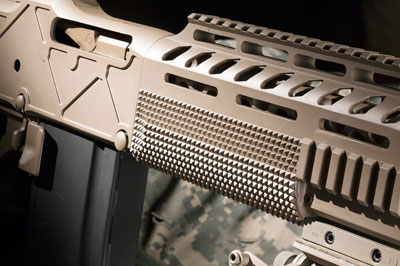
All steel components—including the breech—of the HCAR are treated with Black Nitride by H&M Metal Processing, of Akron, OH. The rifle's exterior is finished in flat dark earth Cerakote, and that brings us to the last program connected with the HCAR: the painstaking development of a 30-round magazine. Able to be used in any BAR, this magazine is made of the finest heat-treated steel. Standard 20-round BAR magazines will fit, but will not actuate the bolt hold-open in the HCAR.
Recently, Ohio Ordnance Works shipped me one of its preproduction HCARs, and also flew out one of its consultants, long-range shooter Mario Marietta, who president of M&S Armament in Clinton, IN. We took the sample rifle and about 300 rounds of Marietta's 178-grain .30-'06 Sprg. handloads and my Federal 168-grain .30-'06 Sprg. Gold Medal Match ammunition to a private range in Montrose, CO, for testing.
The sample HCAR came with the new, matte black Leupold Mark 6 Tactical Riflescope. It features 3-18X power range and 44 mm objective lens on a 34 mm tube with the M5B2 Front Focal Plane and TMR Reticle.It was mounted in an American Defense AD-Recon one-piece mount with 34 mm dark earth lever-locking rings. The scope was also equipped with an Accuracy 1st Scope Level. The bipods used for testing included a Harris model and a Vltor EPOD.
Marietta had a digital program designed by Brian Litz of Applied Ballistics. Marietta took the elevation of 5,800 feet, the temperature of 72 degrees Fahrenheit and the humidity of 63 percent, as well as the 100-yard distance at which we were starting, and entered it into his smartphone with other data. He then entered the come-ups, as outlined by Applied Ballistics Program. The scope setting instantly came up and Marietta made the adjustment in elevation. He proceeded to fire three rounds from the HCAR. They landed in a group just over 1 inch in size, measured center to center. Sub-sequent groups put three of his rounds into similar clusters, with the best one measuring .63 inches. Extensive 100-yard shooting with both the Federal 168-grain Gold Medal Match and Marietta's 178-grain Hornady handloads resulted in identical performance.
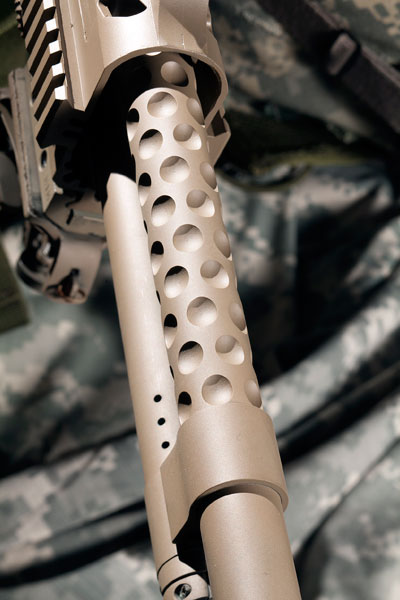
With the remaining Federal 168-grain ammunition, Marietta was anxious to go for the long-range steel targets placed way downrange, and he started with a 15x30-inch steel torso silhouette at 436 yards. He entered the new data into his iPhone, and his first round was a low-center hit. One more click and he put at least another 15 rounds on that target until it became boring. He then went to an identical target placed at a higher elevation at 605 yards, made the adjustments (adding the new angle measurement), and hit that target every time for another dozen or so shots.
Our farthest steel target was at 743 yards, and it was the same story. After entering the dope into his iPhone, Marietta proceeded to put 15 rounds of 168-grain .30-'06 Sprg. Gold Medal Match on target, following another a first-round hit. I opined that a 175-grain bullet would probably perform at 800 yards, and that a 20-inch barrel would easily make HCAR a 1,000-meter rifle. Since I've shot sub-MOA with a 20-inch barrel 7.62 NATO M1A at 1,000 yards, I have no doubt that the more powerful .30-'06 Sprg. HCAR would surpass that performance.
The development of the OOW Heavy Counter Assault Rifle was purpose-driven from the need for a robust semi-automatic rifle capable of precision shooting at distances beyond the capability of the 7.62 NATO cartridge. The rifle is the result of a nine-month project of re-examining and upgrading a proven self-loading rifle designed by one of the world's greatest small arms geniuses, John M. Browning. As such, it is an amazing journeyof an almost 100-year-old "warhorse" striding purposefully into the 21st century.
What about military interest? I again invite your attention to its name. Our troops have continually had to deal with semi-automatic SVD sniper rifles, which fire the 7.62x54 mm R cartridge, a round with comparable ballistics to the .30-'06 Sprg., not to mention the PKM machinegun of the same caliber. We have nothing to equal it at the squad level—at least not yet.
On the commercial side, I predict that the OOW HCAR will be a must-have for collectors of unique and groundbreaking developments in firearm technology, as well as fans of the legendary BAR and those who want a tactical rifle in .30-'06 Sprg.
Specifications
Manufacturer: Ohio Ordnance Works; (440) 285-3481
Action Type: Long-stroke gas piston, rising toggle semi-automatic
Caliber: .30-'06 Sprg.
Capacity: 30 rounds
Barrel Length: 16 inches
Rifling: 6 grooves; 1:10-inch RH twist
Sights: Flip-up front and rear
Trigger Pull Weight: 8 pounds, 13 ounces
Stock: Magpul CTR buttstock; OOW handguard and pistol grip
Length: 38.25 inches
Weight: 11.75 pounds
Accessories: Hard case, cleaning kit, two state-compliant magazines
MSRP: $4,500
Shooting Results
| Load | Velocity | Group Size | ||
| Smallest | Largest | Average | ||
| Federal 168-grain Gold Match | 2,611 | .63 | 1.06 | .90 |
| Handload 178-grain Hornady | 2.772 | .77 | 1.02 | .96 |
Velocity measured in fps at 15 feet with a Pro Chrono Digital chronograph. Temperature: 76 degrees Fahrenheit. Accuracy measured for five consecutive five-shot groups at 100 yards from a benchrest.












